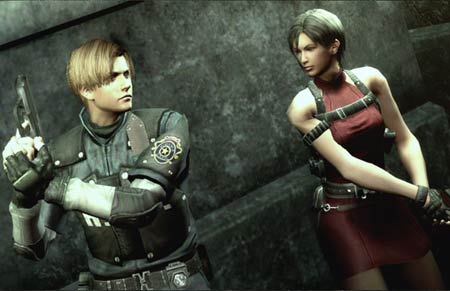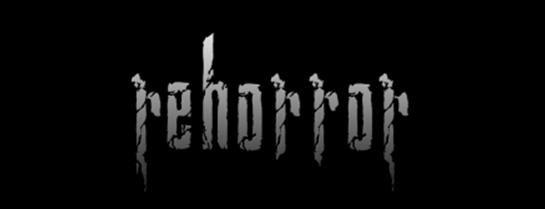Last time we focused on the limited ammo that characters are faced with in previous Resident Evil games and the importance of item management and strategizing with limited supplies. There is much more to be tackled on this subject, which leads us the abilities that Resident Evil characters sustain through the games. As the themes of the games have changed, so has our typical heroes as the focus of the series has shifted some. What sort of transformation have our heroes made during the course of the series?
The importance of strengths and weakness

Since the beginning of the series, Resident Evil has always had a strong character front. Maybe it’s because how different the Resident Evil characters were to other games of the time, maybe as one of the first horror game series and the first many played people really got a feeling for who these characters were. Whatever the case, many fans have their personal favorite characters and have watched them evolve through the series progression.
In the original Resident Evil 1, all the characters could do was run, use items & weapons, and interact with objects in their environments. This was the extent of their abilities, the characters by themselves were helpless and the key to doing well was completely handled through the tools one possessed. As we talked about last time, part of what made this system more interesting was how limited our heroes tools were, but it also helped make the game seem a bit more realistic. It gave a feel for how human strength wasn’t enough to face these monsters, that the only thing keeping us alive was the tools in our hands. This limited our characters abilities to it’s simplest known form; humans themselves have never been known to be naturally on-top of the food chain by themselves, but where our strength comes in is through the tools we build and wield.
However, in what can be called natural progression, humans are also known for being tactical. The focus on pure and limited items held true for some time, but began to have a bit of change in Resident Evil 3: Nemesis. It wasn’t drastic by any means, but with the added amount of zombies Jill had to deal with, she could sensibly take a quick jab at a zombie and knock it over, and potentially could knock a few zombies over to run by or shoot them while down if you could line them up right. The earliest signs of a major change on the actual character abilities was in Resident Evil Outbreak and Zero. As multiple playable characters were introduced, so was the trait for individual abilities for each character. In Zero the abilities were limited to traits the characters had, only Billy Coen could push certain objects, Rebecca could only fit in tighter spaces, etc. However, this system was further expanded in Outbreak where all the characters had different traits and abilities to use. One character could be agile and quickly dodge an incoming attack, others had fierce tackles or kicks, others could swing a knife like crazy. All of these gave characters one sort of advantage that previous characters didn’t have in the series. In the REmake of the first game, defensive items were also introduced, weapons one could use while being grabbed by an enemy to defend themselves. These all made the characters more capable but were also sensible additions that one could do in a zombie apocalypse.
Resident Evil 4 came along which ‘evolved’ the series. There were many great additions it did bring and evolutions needed to keep the franchise alive, but it also started the real drift away from featuring characters that were at least somewhat normal, starting to have a bigger focus on action heroes. Leon in Resident Evil 4 now could possess a wicked knife swing to combat enemies with in a limited space. Knives had always been present in Resident Evil, but never really had been that useful. Leon now had the ability to knife his enemies quickly and efficiently, which came even more handy now that enemies could be stunned by hitting specific points on their body. More so, Leon could also perform physical assaults on enemies he stunned that included kicking enemies, performing a suplex on them, and other melee moves to get extra hits on them. He could be prompted to do extreme things like leap through lasers, jump out of windows in multiple story buildings, run on-top of an enemy and knife the ever-loving crap out of them, and be a general badass. While it all did add some depth to the gameplay, it also made Leon less of a normal person and more an over-the-top hero. Resident Evil 5 took this even further though, with previous series protagonist Chris Redfield now a buffed-up hero who could send enemies flying with exploding heads by punching them in the face. He had many of the same abilities of Leon but had extra dodging maneuvers, perform more over-the-top melee moves, and now famously possessed the strength to take on huge boulders and shatter buildings by just punching things.
The best things are brought in balance. Depth of gameplay is never a bad thing, but in horror the limitation of our heroes is part of what puts us on edge. It’s hard to be afraid when your hero in a horror game is suddenly more powerful than most game heroes, Chris Redfield is more powerful than most heroes we find in shooter games now even. Capcom have seemed to listen to this and are refocusing on the limitations of characters as they have discussed in Revelations. The good thing about progression is when one experiments a little into something that doesn’t feel right with the root of the series, one can learn and make changes to get back on track. If you have any suggestions for things to tackle as we count down to Resident Evil’s 15th anniversary, send an email to jbocanegra@relyonhorror.com telling of your Resident Evil memories, and you’ll have a chance to be featured in a future installment of our countdown feature.





